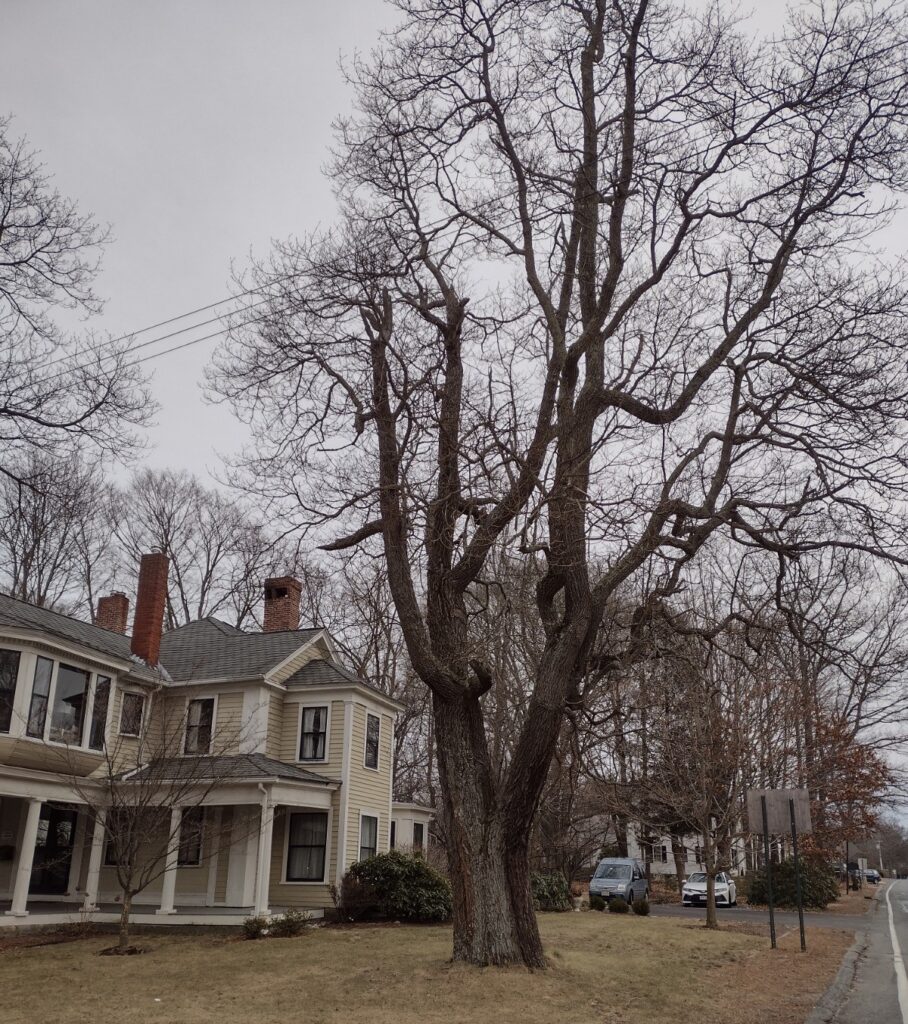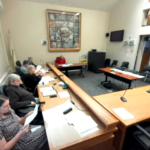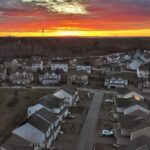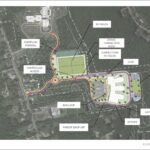
This sassafras free at 2 Park Street was measured as the third largest in the state. PHOTO/PETER LAGOY
Based on a measurement by the urban forester for northern Massachusetts, Hopkinton is home to the third-largest sassafras tree (sassafras albidum) in Massachusetts. Sassafras trees are most commonly seen as small shrubs, or as tall, relatively thin, straight trees with knobby bark; quite a few are located along Echo Trail off of Granite Street. They are a native species best known for having leaves that have one, two (mitten shaped) or three lobes. The leaves have a sweet odor when crushed. The ground leaves of sassafras are used in file powder, a thickening agent in gumbo in Louisiana’s Creole cooking. The roots were formerly used as a main ingredient in root beer.
Hopkinton’s sassafras is located on private property owned by the Dockstaders at 2 Park Street, a property with its own history as the former home of Lee Claflin. Mr. Claflin helped develop the shoe manufacturing techniques that made Hopkinton a shoemaking capital, and he helped found Boston University. Relevant to Black History Month, Mr. Claflin was a passionate abolitionist and harbored fugitive slaves. He, along with his son William, a former Massachusetts Governor, founded the first college in South Carolina to allow admission regardless of race, Claflin University in Orangeburg, South Carolina.
I’d walked past the tree for years without giving it much thought, as the tree is relatively unassuming; many trees on the Town Common are larger. In fact, a magnificent American beech that is likely one of the largest of its species in Massachusetts also resides on the property. However, when I realized the tree was a sassafras, I thought that it did seem much larger than other sassafras trees I’d seen. The state Department of Conservation and Recreation (DCR) Forestry Division has a Legacy Tree Program, and with the Dockstaders’ permission, I measured the tree’s diameter and submitted the information to the state this past summer. In late January 2023, the urban forester for the DCR’s North District came out and measured the tree. He indicated that the tree has a 132-inch (11-foot) circumference, is 63.8 feet tall and has a 43.6-foot canopy for a score of 207 points on the state scale. In a text, the forester noted that it was the third-largest sassafras in Massachusetts.
— Peter LaGoy, Hopkinton
Editor’s note: The opinions and comments expressed in letters to the editor are those of the writers and not necessarily those of the Independent. Submissions should be no more than 400 words and must include the writer’s name and contact information for verification. Letters should be relevant and not primarily for the purpose of promoting an organization or event or thanking sponsors or volunteers. Letters may be edited by the Independent staff for space, errors or clarification, and the Independent offers no guarantee that every letter will be published. For a schedule of deadlines for letters and other submissions for the print edition, click here.























0 Comments